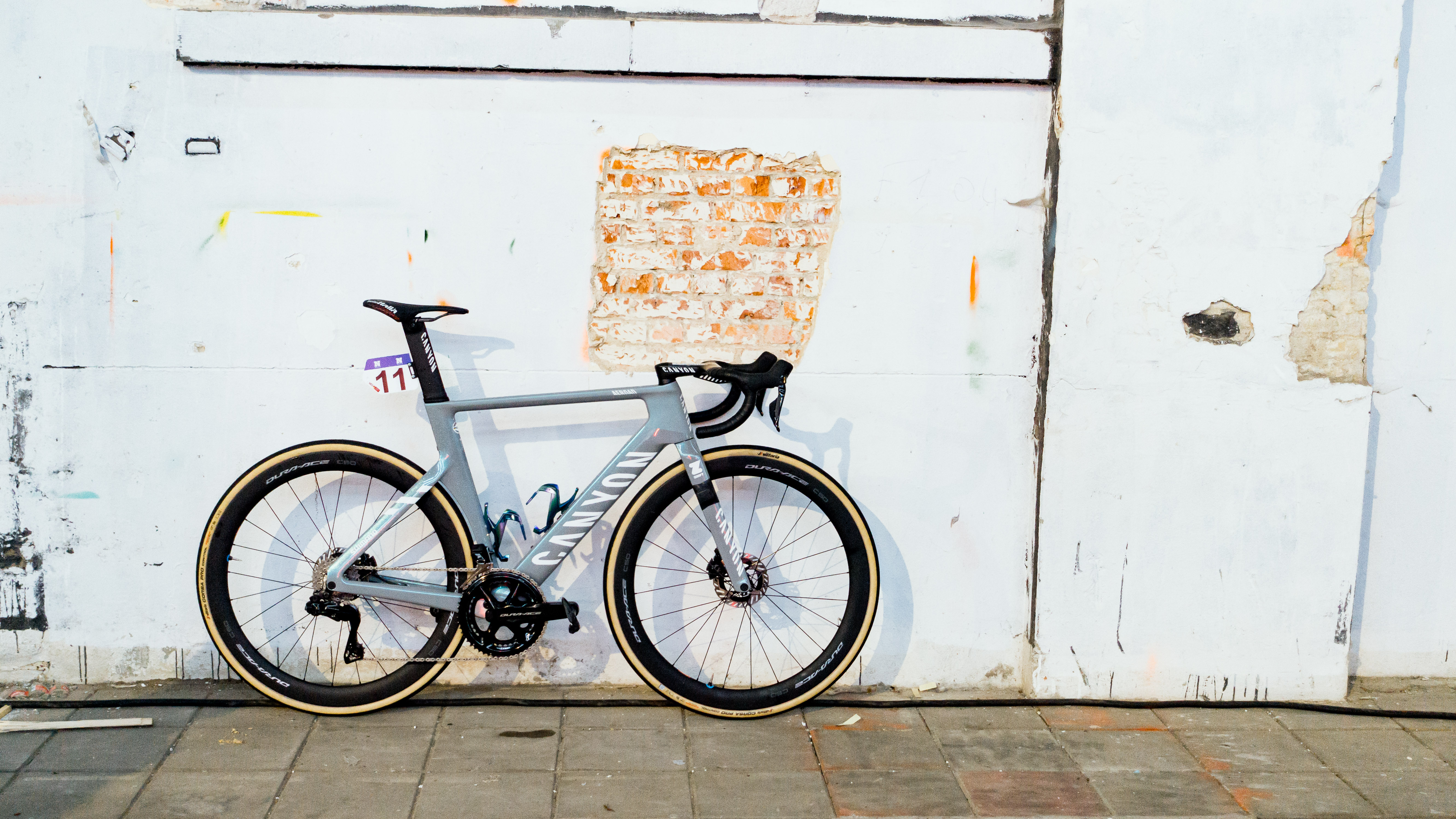
Writing about tech at the classics fifteen years ago must have been an absolute doddle. Classics-specific Dugast tyres abounded, and bikes were replete with all manner of cobbled mods. Box section rims in place of carbon, round bars and alloy stems, and the ever-looming threat of a brand bringing out yet another road bike with a modicum of suspension.
Now, it’s harder to find any standout tech strategies. Disc brakes and ever-widening tyre clearances have left modern bikes so alarmingly capable over rough ground that teams no longer really mod their setups at all for the classics. Sure, the odd rider here and there insists on using something wacky, but generally speaking, riders use their standard setup for the Classics.
Take the winning bikes from Omloop Het Nieuwsblad; two Cérvelo S5 bikes, with nothing at all out of the ordinary about their setup, save for an unreleased SRAM front derailleur and a new wheelset. Yes, I appreciate an unreleased derailleur and unseen wheels are noteworthy, but they are not components specific to the classics season, at least not from what we can tell at the moment anyway. Compound this with Wout van Aert taking the win at Kuurne-Brussel-Kuurne and it's a lockout for normal aero bikes.
Regardless, taking a look at things in the round there are still trends worth talking about, and as ever it starts with tyres.
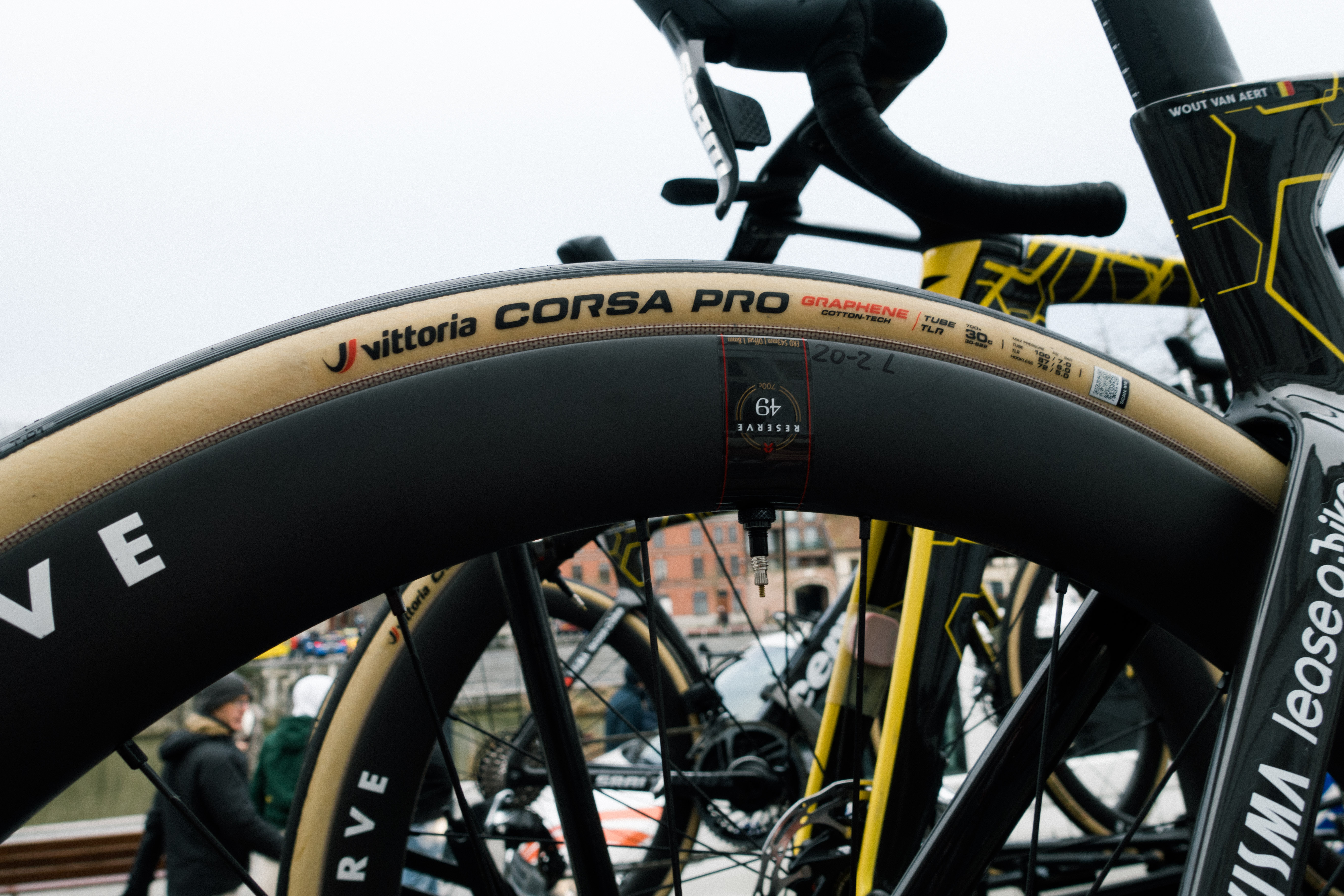
Wider tyres aren't just for comfort
Casting my mind back to my visit to the Tour of Flanders last year, the talk of the tyre world was the unreleased but widely spotted Vittoria Corsa Pro tyres. Most Vittoria sponsored teams ran them, and if my memory serves me correctly the majority of teams were using 28c widths.
Rumble on just shy of a year, and you’d be forgiven for thinking 28c tyres had gone extinct. The majority of teams now, regardless of sponsorship, are using 30 tyres. As rims get wider so tyre width has to keep apace to maintain optimal aerodynamics. There is also the safety aspect, as there has been suggestions that a too-narrow tyre combined with a wide rim bed was to blame for Thomas de Gendt’s blowout during the UAE Tour.
Using 30c tyres would have been unheard of a few years back, but modern wheels are increasingly optimised around this width, so it isn’t simply a comfort factor. Kuurne-Brussel-Kuurne is, on the whole, for a Belgian classic, a very smooth race, and while there are cobbles, it’s a far cry from those seen even at Flanders, let alone Roubaix.
From what I could gather on the ground, Tratnik’s unreleased wheelset, a 42/49 mixed depth set from team sponsor Reserve, was more aero with a 30c than with a 28c. This matches what we’ve seen from new wheelsets like the Hunt SUB50, too, and as bikes get lighter, there is less of a weight penalty for going wider, especially if there’s no aero drawback either.
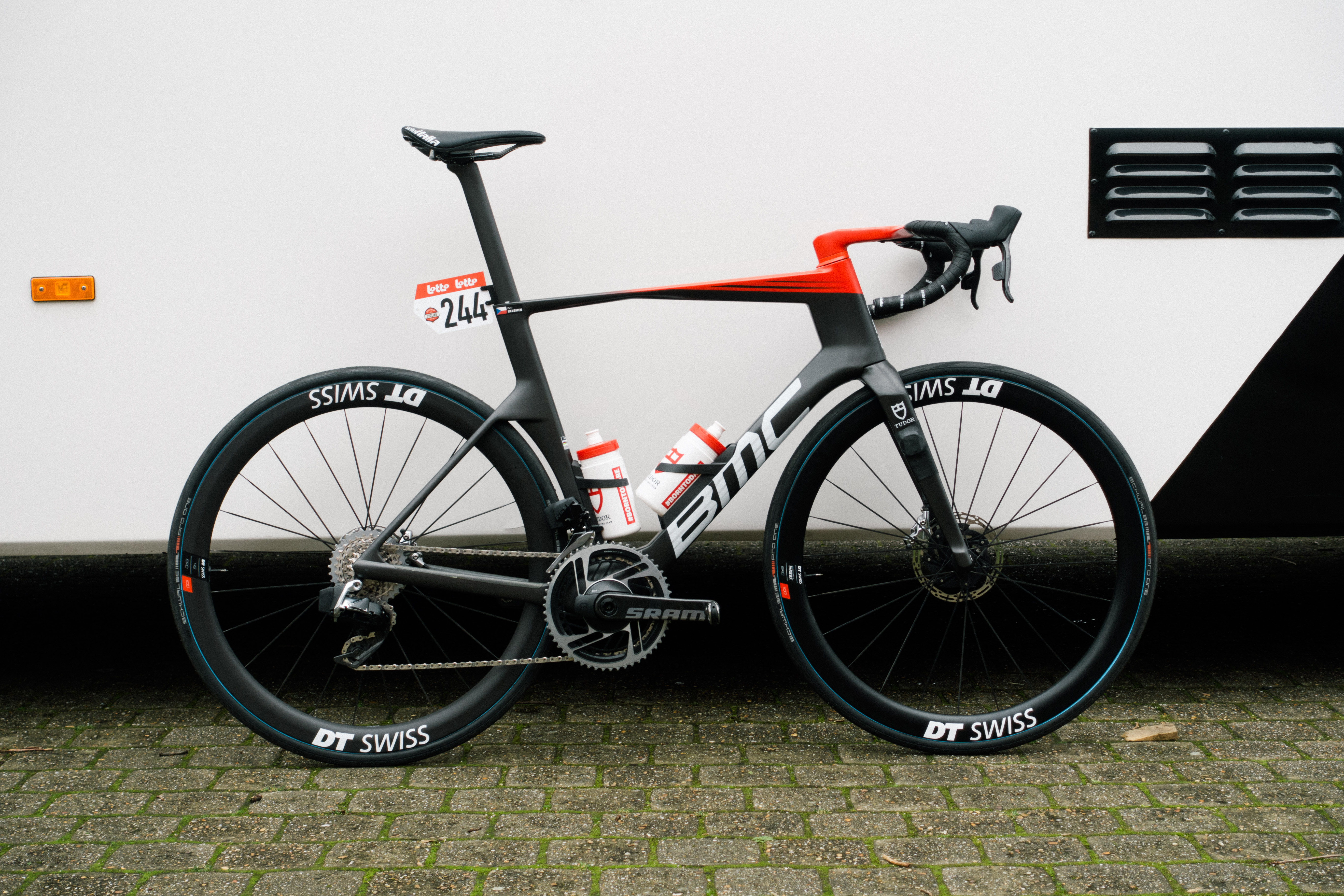
No more classics bikes, very few classics tyres
Maybe we will still see the odd team using Roubaix-specific Dugast tyres, mostly because they’re not using tubular wheels anymore. With wider tyres comes lower pressures, and with lower pressures come better-performing tubeless setups. As such, there were very few teams using what we’d all think of as a classic tyre. A few Vittoria-sponsored teams were using the brand's more grippy, more puncture-resistant Corsa Pro Control option, but more teams simply stuck with the Corsa Pro that they’d use for the rest of the season, admittedly perhaps in a 2mm wider width.
It will be interesting to see if the wider tyres remain a staple for the season as a whole. As rims are now optimised with certain widths in mind it may be that we see tyre width dictated by rim choice more than by rider or surface preference.
More so than a lack of classics tyres was a distinct lack of classics bikes. Since Matt Hayman won at Roubaix on an aero bike things haven’t really been the same, and riders seem to use the same bike at the classics as they would for any other race. A few riders still opt for round bars, but that seems to be an ergonomic choice rather than anything else. Trentin, for example, uses classic drops as a preference, and there isn’t yet a BMC-integrated cockpit to suit that need.
Given we no longer see the Trek Domane, the Specialized Roubaix, and other ‘endurance’ bikes to the fore on the cobbles I suspect brands will soon pivot these models to a more all-road use case.
Curiously, at Omloop Het Nieuwsblad, Wout van Aert could be seen happily plugging away at the front on his Cervelo Soloist, in stark contrast to the entirety of the rest of the Visma squad. My suspicion is that Roubaix is where his crosshairs are most keenly trained, and he’s testing his potential setups well ahead of time. Maybe northern France is where the Classics bike with bed in and make its last stand.
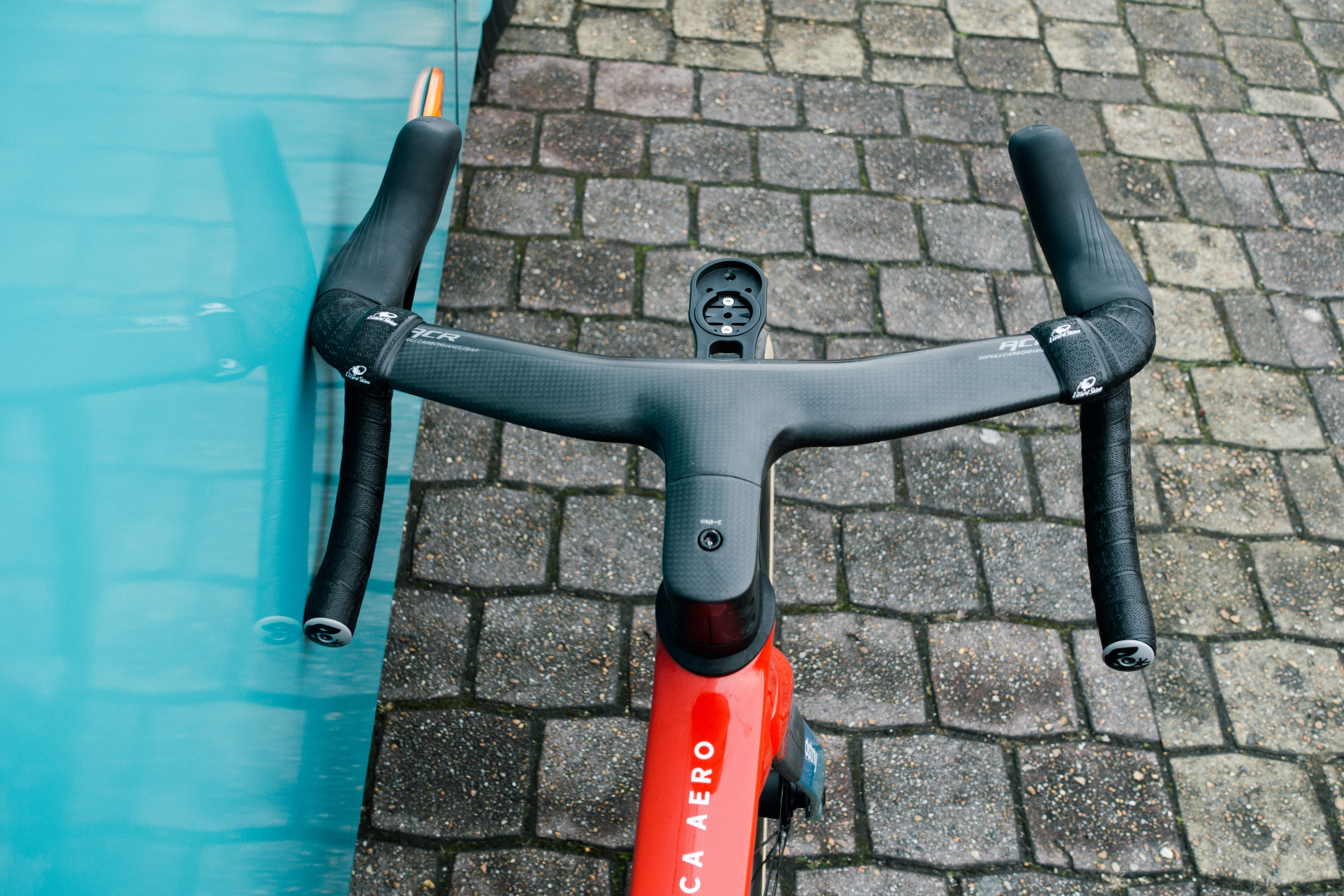
No shift to super narrow bars
There are a few riders running very narrow bars (I’m talking sub-38cm here), but they are few and far between and are probably the riders who were doing the same thing last season anyway. Despite the UCI banning turned-in brake levers for the 2024 season, I couldn’t see any evidence of riders opting for much narrower bars in order to gain an aero advantage.
Many riders still had their levers turned in, some appearing to definitely be beyond the UCI legal limit of 10 degrees, but I believe many who would go narrower given the choice are hamstrung by sponsor-correct options; many brands simply don’t make anything narrower than a 38cm.
Victor Campenaerts, ever reliable from a tech journalism point of view thanks to running some wonderfully insane setups in the past and hugely vocal about the UCI lever ban, was only using a 38cm bar from team sponsor Vision.
I asked Campenaerts’ mechanic about this: “We kept him on the 38cm centre-centre, and now with the current partner we have with Vision, it’s a bit tricky because Vision basically makes them in 40cm centre-centre.”
Campenaert’s hoods are the regulation 10 degrees, but there was nobody anywhere opting for anything as drastic as the 22cm Lambda bars I tested earlier this month.
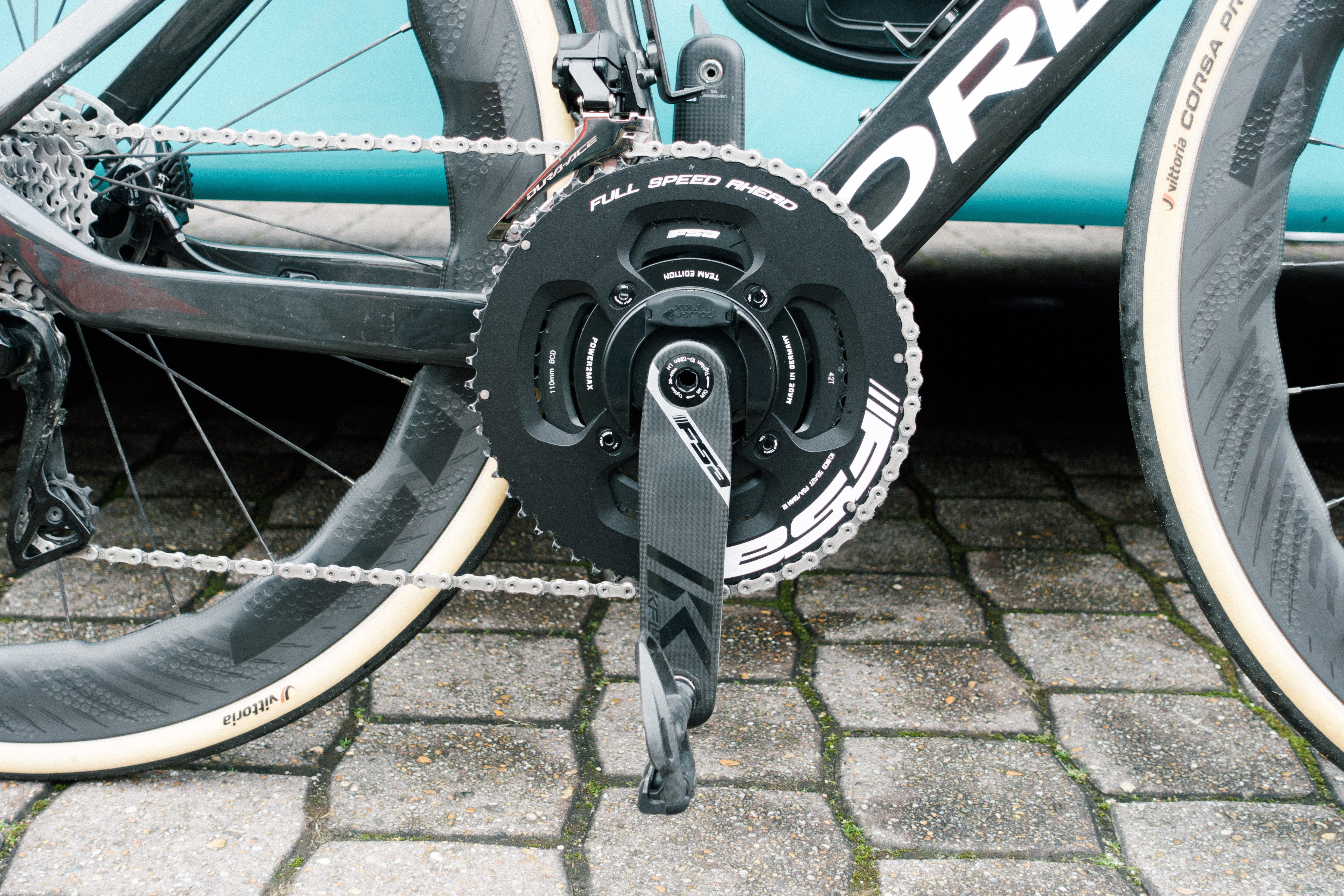
Bigger chainrings becoming normal
If we’re talking about Campenaerts, it’s impossible not to talk about chainring size. Last year, the Belgian made headlines when he was seen using a 62t chainring and a Classified rear hub. The theory is that a larger chainring combined with using larger sprockets at the rear is more efficient, and it’s something we’re regularly seeing in time trials, too.
This year, though, many riders were spotted using larger-than-standard chainsets. Campenaerts himself was using a 58/42t setup, with Tratnik’s winning bike opting for a 54/41t. We saw similar chainsets on Wout van Aert’s bike, amongst many others, and a 54t chainring is certainly now the most popular choice. Taking a quick straw poll from the admittedly more hilly Tour of Flanders, the chainrings there seemed, on the whole, to hover around 52t.
With cassettes becoming wider, running larger chainrings, while looking incredibly cool, no longer presents the impossible gearing that it would previously. I doubt it’ll trickle down to consumer bikes anytime soon, but if the trend continues opting for a ‘pro’ double may well mean larger teeth counts.
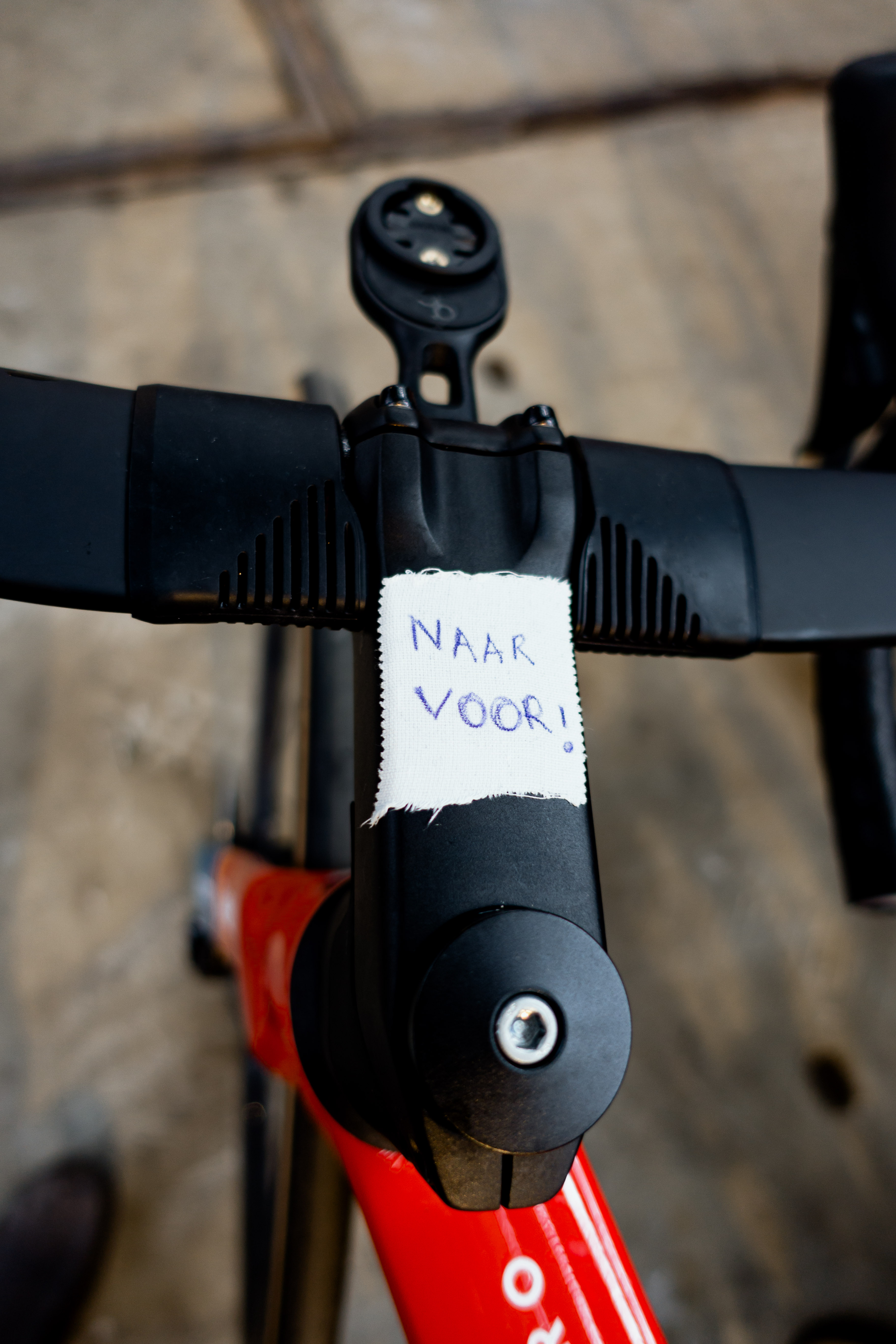
Stage notes are a very personal thing
Hanging around the SD Worx-Protime bus at Omloop, I watched current World Champion Lotte Kopecky exit the bus and stick a printed set of stage notes on her stem. This was swiftly followed by defending Tour de France champion Demi Vollering, who affixed to her stem a series of handwritten notes, written on sticky canvas tape.
On a further rough survey of the bikes in the paddock, it seems many riders prefer their own notes to the preprinted ones. This was much more prevalent in the women’s peloton, from what I could tell.
With smaller stems in general, perhaps the lack of real estate leaves the riders to streamline their note strategies or, in some cases, as I found, extend the notes to the top tube.
Most race notes seemed to indicate the key climbs and when to eat and drink, but my favourite of the day was a simple strip of tape with “Naar Voor!” emblazoned upon it, or “To The Front!” in English.

Women’s teams happy to go off piste for saddles
This one may take a little more surveying, but I think it’s noteworthy even from the small amount of data I have. In the men’s peloton, you see a wide variety of saddle models within a team, but I can’t recall ever seeing a saddle from the wrong brand.
At Canyon-SRAM, however, there were several Specialized Power saddles despite the team’s Ergon sponsorship. While saddle sores afflict men, and have recently caused Tom Pidcock to abandon a race, men don’t have the same soft tissue that women do, and it’s heartening to see a team clearly prioritising the comfort of their riders, in spite of sponsorship arrangements.
Get unlimited access to all of our coverage of the Spring Classics- including reporting, breaking news and analysis from Strade Bianche, Tour of Flanders, Paris-Roubaix and more. Find out more.







